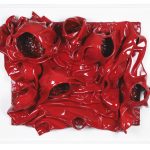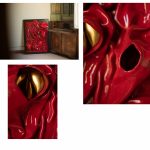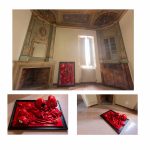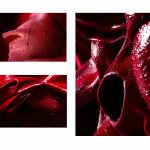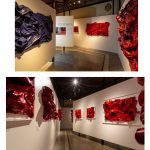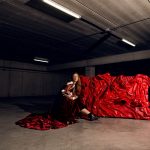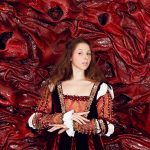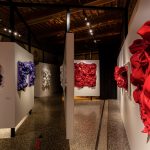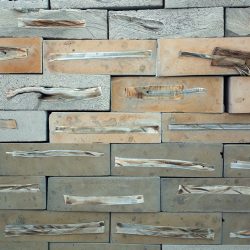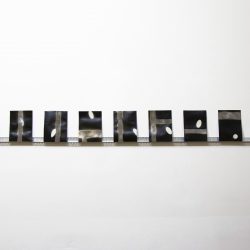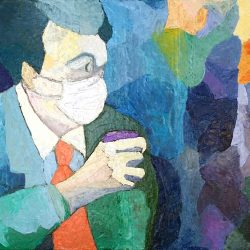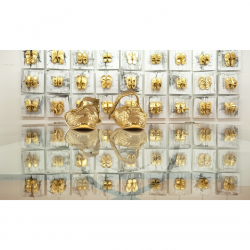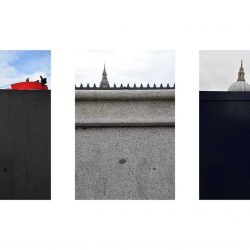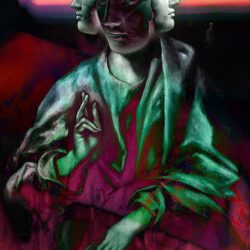work
LEX ITALICA ed. BORGIA
| category | Other |
| subject | Political / Social |
| tags | arteitaliana, bellezza , beautiful, arteitalia , artistitaliani , barocco , italia , artcouture , italianstyle , loadingart , staybaroquestayfoolish , baroque , LUCREZIABORGIA, LEXITALICA, BORGIA, LEXITALICAEDBORGIA, rinascimentobarocco , newbaroque , nuovorinascimento , galleryart , contemporarypainting , youngartcollectors , abstractart , curator , artcollector , contemporarycurator , contemporarypainting , wallsculpture , italianartists , gallery , italianartist |
| base | 70 cm |
| height | 100 cm |
| depth | 38 cm |
| year | 2020 |
LEX ITALICA ed. LUCREZIA BORGIA (code: LILB17-2020; mixed media, resins, tetrafilo, water-based enamel)
LEX ITALICA SERIES EXHIBITED AT:
2019, Palazzo Guicciardini-Florence 2019, ART-FAIR BOLOGNA; Castel dell’Ovo Naples, MOOVART collective; 2019, Arthill Gallery-London; LONDON, G.B .; 2019, Riba North-Liverpool, National Architecture Center, Liverpool, G.B .; Finalist at UMBRIART 2019; Terni; 2020, ARTE GENOVA 2020, Genoa; 2020, ART HUB (solo) with Arch. Fabrizio Milesi Atelier, Gubbio; 2020, collective exhibition at the ZEFFIRELLI Museum with “MOOVART CO-EXPO FIRENZE 2020” Florence; 2020, Personal Exhibition "RINASCIMENTO feat. Barocco. LOADING ART" (Palazzo di Sorbello, Perugia, October 2020); 2020, Invited to “REFOLDED. Meta-artistic Paths ”, collective curatorial - Luiss Businnes School, Pastificio Cerere Foundation; Rome.
INTRO TO THE WORKS:
If the Renaissance is a proclamation to "seek" lessons from the past, from which to extract new light in the present, on the other hand, the Baroque is a hymn to "wonder", to the extraordinary creative and as such, timeless. These two historical examples can be fused together and well spent as teaching in the contemporary: the resulting synthesis is a RENAISSANCE-BAROQUE where "Amazement" and "Research" elevate man, through art armed with beauty. Beauty becomes man's solicitation, a vehicle for ascent, a stimulus for growth, food for thought. It is a clear invitation to "loading art": a common and essential good with which we have nourished ourselves in the past and continue to nourish ourselves today not only with our eyes ... Let us load ourselves with art, therefore; we must put art in the place it deserves, encouraging the growth of our cultural heritage, as our fathers taught us in the past.
The Baroque and the Renaissance, therefore, do not become a reference to a specific historical period, but a hymn to creativity, research, human intuition. An eternal concept, to be spent in the present. The Renaissance promoted by Lorenzo the Magnificent is just one of the glorious and brilliant historical examples of devotion to art and beauty as a means of growth. In the Renaissance, human intuition was nourished, because they were aware that it was the greatest form of investment in existence. Artistic genius was cultivated; promoting its dissemination to inspire all peoples. And it is an ever-current model, an evergreen example of acumen of extreme simplicity and practicability.
It is the creation of art, understood as a common good, to be preserved and kept alive. This is the message that my works harbor in desires. The days of physical confinement made us aware that nothing will be the same as before. And all the rebirths after the great epidemics are formal renewals, aesthetic renewals, but above all ethical; rebirth of something that is not absolutely necessary for survival, like art, but for this very reason, of extreme importance to survive. So ... LOADING ART!
LEX ITALICA ed. LUCREZIA BORGIA:
All this is transfused into the most emblematic project entitled “LEX ITALICA”.
In this series, the teaching of history is transmitted precisely as a new way of behaving for those who care about the things of art. The human virtues are the only ones to be encouraged to take a way out in dark times, and depending on the colors assumed, the Lex Italica bear the names of the fundamental Italian Renaissance families whose great intuition was to support the geniuses (the artists ) in their creations: from the Medici to the Borgias, from the Sforza to the Bourbons is the triumph of color and form, in which the historical examples of those who invested busily in art stand as teaching for the present.
The "cyclical nature of history" of Machiavellian memory is the underlying concept of the work: "All times return. Men are always the same ”Machiavelli said. The ages change but we are always endowed with the same vices and virtues as human beings. Therefore, history stands as a teacher of life, because times change, but the underlying system is the same: thus man, while adapting to his time, always reveals his weaknesses in an intricate and twisted system, a sort of labyrinth. , like the work, however, equipped with "ways out" identifiable only thanks to the "human virtues". The "Italian system", as represented in Lex Italica, is fascinating, sinuous and captivating, almost hypnotic in its baroque guise; but with a closer look it reveals all its fragility in its incomplete and reticent structure. However, this is not an end in itself, destructive criticism; rather constructive, the work has ways out, which can only be seen thanks to the human intellect. Whoever does not do his best remains trapped in his torpor; whoever tries with courage and wit, in the end comes out victorious. The solution is always there, just find it.
LEX ITALICA SERIES EXHIBITED AT:
2019, Palazzo Guicciardini-Florence 2019, ART-FAIR BOLOGNA; Castel dell’Ovo Naples, MOOVART collective; 2019, Arthill Gallery-London; LONDON, G.B .; 2019, Riba North-Liverpool, National Architecture Center, Liverpool, G.B .; Finalist at UMBRIART 2019; Terni; 2020, ARTE GENOVA 2020, Genoa; 2020, ART HUB (solo) with Arch. Fabrizio Milesi Atelier, Gubbio; 2020, collective exhibition at the ZEFFIRELLI Museum with “MOOVART CO-EXPO FIRENZE 2020” Florence; 2020, Personal Exhibition "RINASCIMENTO feat. Barocco. LOADING ART" (Palazzo di Sorbello, Perugia, October 2020); 2020, Invited to “REFOLDED. Meta-artistic Paths ”, collective curatorial - Luiss Businnes School, Pastificio Cerere Foundation; Rome.
INTRO TO THE WORKS:
If the Renaissance is a proclamation to "seek" lessons from the past, from which to extract new light in the present, on the other hand, the Baroque is a hymn to "wonder", to the extraordinary creative and as such, timeless. These two historical examples can be fused together and well spent as teaching in the contemporary: the resulting synthesis is a RENAISSANCE-BAROQUE where "Amazement" and "Research" elevate man, through art armed with beauty. Beauty becomes man's solicitation, a vehicle for ascent, a stimulus for growth, food for thought. It is a clear invitation to "loading art": a common and essential good with which we have nourished ourselves in the past and continue to nourish ourselves today not only with our eyes ... Let us load ourselves with art, therefore; we must put art in the place it deserves, encouraging the growth of our cultural heritage, as our fathers taught us in the past.
The Baroque and the Renaissance, therefore, do not become a reference to a specific historical period, but a hymn to creativity, research, human intuition. An eternal concept, to be spent in the present. The Renaissance promoted by Lorenzo the Magnificent is just one of the glorious and brilliant historical examples of devotion to art and beauty as a means of growth. In the Renaissance, human intuition was nourished, because they were aware that it was the greatest form of investment in existence. Artistic genius was cultivated; promoting its dissemination to inspire all peoples. And it is an ever-current model, an evergreen example of acumen of extreme simplicity and practicability.
It is the creation of art, understood as a common good, to be preserved and kept alive. This is the message that my works harbor in desires. The days of physical confinement made us aware that nothing will be the same as before. And all the rebirths after the great epidemics are formal renewals, aesthetic renewals, but above all ethical; rebirth of something that is not absolutely necessary for survival, like art, but for this very reason, of extreme importance to survive. So ... LOADING ART!
LEX ITALICA ed. LUCREZIA BORGIA:
All this is transfused into the most emblematic project entitled “LEX ITALICA”.
In this series, the teaching of history is transmitted precisely as a new way of behaving for those who care about the things of art. The human virtues are the only ones to be encouraged to take a way out in dark times, and depending on the colors assumed, the Lex Italica bear the names of the fundamental Italian Renaissance families whose great intuition was to support the geniuses (the artists ) in their creations: from the Medici to the Borgias, from the Sforza to the Bourbons is the triumph of color and form, in which the historical examples of those who invested busily in art stand as teaching for the present.
The "cyclical nature of history" of Machiavellian memory is the underlying concept of the work: "All times return. Men are always the same ”Machiavelli said. The ages change but we are always endowed with the same vices and virtues as human beings. Therefore, history stands as a teacher of life, because times change, but the underlying system is the same: thus man, while adapting to his time, always reveals his weaknesses in an intricate and twisted system, a sort of labyrinth. , like the work, however, equipped with "ways out" identifiable only thanks to the "human virtues". The "Italian system", as represented in Lex Italica, is fascinating, sinuous and captivating, almost hypnotic in its baroque guise; but with a closer look it reveals all its fragility in its incomplete and reticent structure. However, this is not an end in itself, destructive criticism; rather constructive, the work has ways out, which can only be seen thanks to the human intellect. Whoever does not do his best remains trapped in his torpor; whoever tries with courage and wit, in the end comes out victorious. The solution is always there, just find it.



